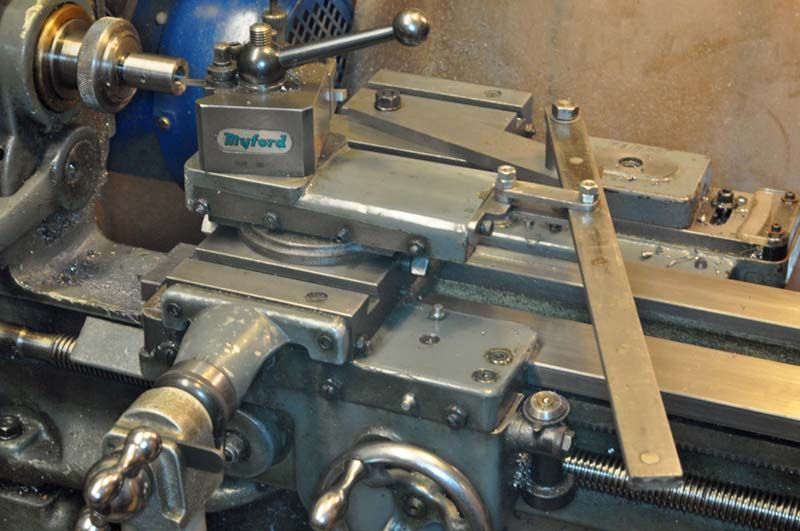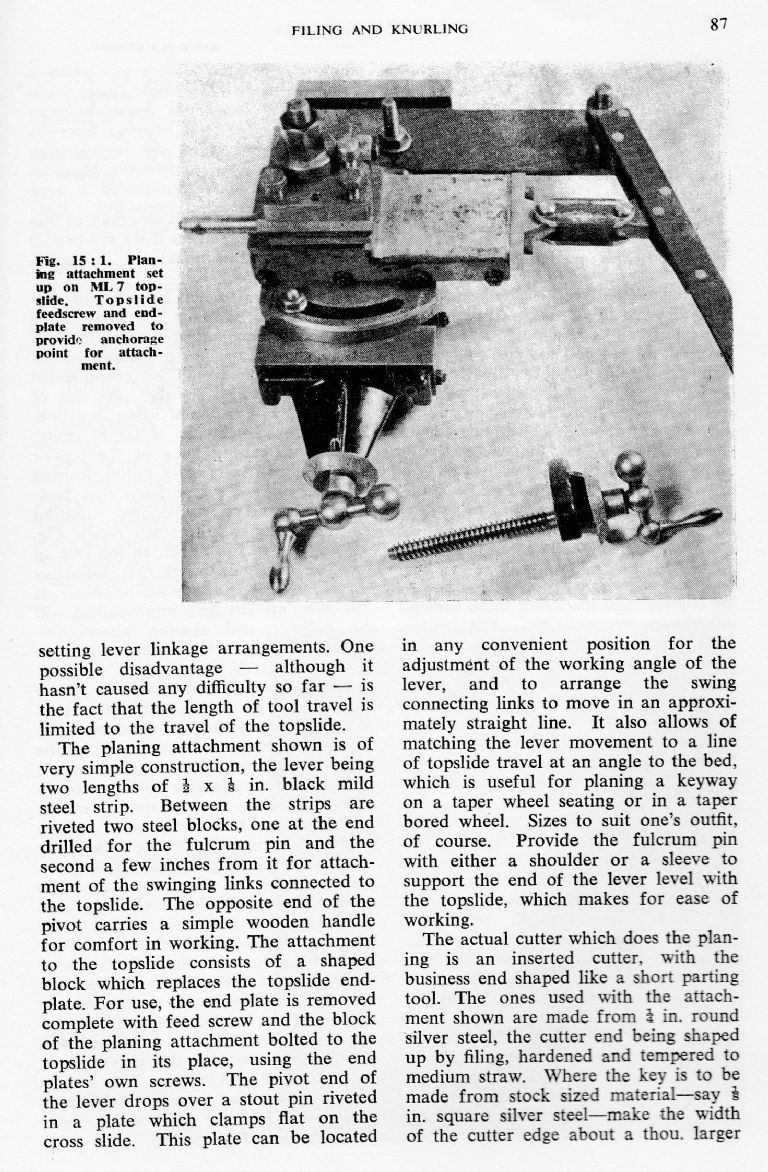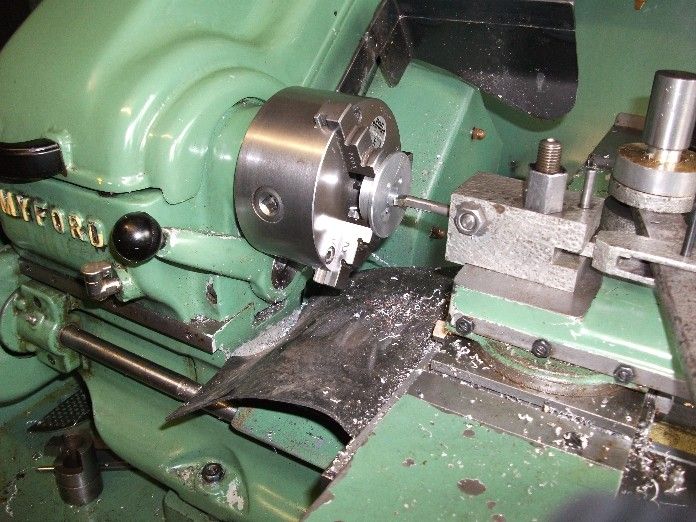I've been searching for the text-book I have / had that goes into quite a bit of detail on using the shaper.
Things vanish in my house and workshop, but I've a sneaking suspicion I lent the book to a friend… before the Covid World Tour.
I'd wanted to quote from it. Among other things I a m pretty sure it shows the geometry of the tool action, explaining the effect of tool distance from the fulcrum. However I did look in one or two of my old industrial (rather than model-engineering) books, as these show sample machines most of us could not accommodate. In these the shapers do appear intended used rather as in Hopper's photo – no mention of hats though – but that could be misleading.
A dodge I have found helpful is to file a chamfer along the leading edge of the work, so the tool is slightly eased into the metal rather than having to chop into a vertical face.
What I also recall from the AWOL book, which I think is a model-engineering text rather than an apprentice-training reference, is a simple shaper tool-holder based on an old bicycle crank. It is trimmed (by shaping?) to fit the clapper box, and a cylindrical holder for round-section tool-bits fits in the crankshaft hole. It was designed for down-cutting both sides of the work as well as the top, with just a simple adjustment.
* * *
My original enquiry was prompted by having to build a drive for a small horizontal mill (motor speed nearly 1400rpm, spindle around 60rpm), and thinking of the 2-speed transmission for my steam-wagon – for which there are no drawings.) I've taken a break from the mill project as I'd hit a sort of impasse, to complete a Hemingway kit 'Worden' T&C grinder I started ages ago. That has full drawings, a luxury despite the frustrating way some parts are dimensioned!
Hopper.







